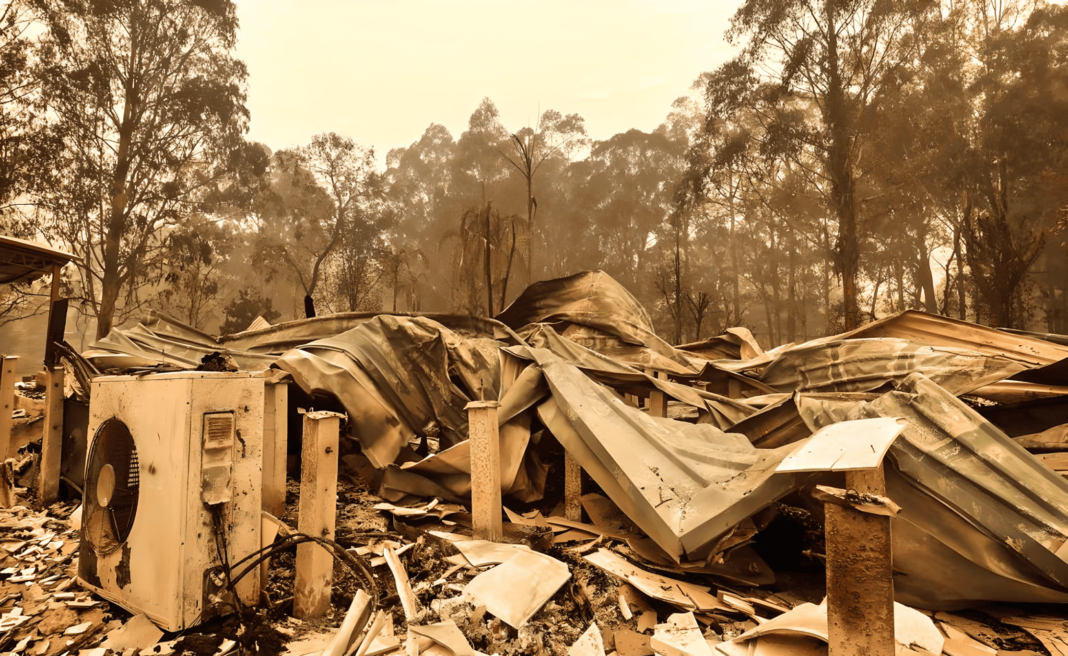Wood Central understands that desperate manufacturers are importing low-density timbers to be used in windows, which could breach fire compliance requirements in the wake of the decision by the Victorian government to lock off native hardwoods.
More than 24% of Australian window manufacturers on the eastern seaboard use Victorian hardwood species, with the decision to close the resource causing chaos for window manufacturers across the country.
And with a significant portion of the nation now subject to extreme bushfire risk, Wood Central understands that a growing number of dwellings could be at risk in bushfire-prone areas.
This morning, the Wood Central Publisher was notified of the situation following the publication of its story yesterday, reporting on the surge of Brazilian hardwoods to meet the gap in the Australian market.
It reported that Brazilian hardwoods already in Australian warehouses have FSC certification, but this has yet to be confirmed.
Now, Wood Central can reveal that the Australian Glazing and Window Association – the peak body for the glass, glazing and windows industry, has major concerns that “fast-grown plantation hardwood plantation” substitutes are placing bushfire-prone dwellings at high risk.
Their concerns relate to low-density timber windows used in bushfire-prone areas, specifically “AS 3959:2018 Construction of buildings in bushfire-prone areas.”
Under the standard, “all timber used in the manufacture of timber windows for window and door frame assemblies less than 400 mm from the ground or deck, to have a density of 650 kg/m3 or greater at a 12% moisture content when used in Bushfire Attack Levels (BALs) BAL−12.5 and BAL−19.”
A Technical Fact Sheet, “Compliance Warning for Timber Window Manufacturers,” published in August, warns that “with imported and locally fast-grown plantation hardwood alternatives now being offered, it is essential to ensure that you have appropriate documentation to demonstrate compliance with AS 3959.”
Wood Central contacted AWSA who confirmed that concerns raised in August remain as Australia embarks on a ferocious fire season.
It is backed by an Australian timber industry figure who told the Wood Central Publisher that they are “convinced substitution of non-compliant timbers is occurring, with Victorian species (which are in increasingly short supply) are being replaced by low-density alternatives.”
The push for plantation and imported alternatives over traditional (and compliant) species, including Victorian ash, Silvertop ash and Messmate, is a direct result of the decision by the Victorian Government to accelerate the exit from the native forest industry.
That decision caused a free-for-all, with manufacturers doing everything they could to secure supplies of hardwood timbers and their livelihoods.
According to the Technical Fact Sheet provided to Wood Central, “the (then) Andrews’ Government decision to stop the annual harvesting and replanting of the 0.04% of the Victorian native hardwood estate, the equivalent of 4 trees in 10,000, has significant repercussions for the Victorian timber industry and its supply chain.”
That decision “led many window manufacturers, who heavily relied on hardwood, to explore alternative ways to sustain their production capacity.”
“Therefore, it is vitally important that you obtain documentation from your supplier for that plantation species that can be provided to building design professionals and Building Surveyors/Certifiers on request to ensure the use of compliant timber products.”
Examples of such timbers which could be at risk include:
- Plantation-grown mountain ash (Eucalyptus regnans) from Victoria, Chile, Uruguay, and New Zealand.
- Plantation-grown flooded gum (E. grandis) from South America.
- Plantation-grown shining gum (E. nitens) and southern blue gum (E. globulus) from Victoria, Tasmania, and New Zealand.
- Meranti (e.g., Shorea Spp)
Wood Central spoke to Daniel Wright, National Business Development Manager for Australian Sustainable Hardwoods (ASH), the country’s largest hardwood manufacturer.
According to Mr Wright, “ASH ruled out a number of imported options due to concerns with BAL−12.5 and BAL−19 conformance.”
“We needed a timber that all our customers could get behind, and that’s why we opted for Glacial Oak (otherwise known as American Oak), which meets BAL−12.5 and BAL−19.”
For more information about hardwood timber and its properties, visit the WoodSolutions website.






